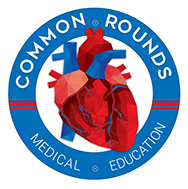Author: Hamed Shahnam
Practicals form an important component of learning at the Australian National University and probably most medical schools around Australia. They serve as a platform to apply knowledge learnt in physiology, microbiology, histopathology and anatomy (many other subject areas). Most practical sessions are guided by experienced tutors (who can be your lecturers, hospital clinicians and support staff). There is also written information, questions and prereading that are outlined in practical books that students are provided with at the start of each semester. Lets discuss some of the different types of practicals that are delivered in medical schools.
Anatomy Practicals
In many postgraduate medical curricula anatomy is taught at an extremely rapid rate. At our university we learnt the bulk of human anatomy from head to toe in a matter of several of months. This doesn’t include the radiological component of anatomy and the clinical application. Therefore the practicals were an important part of applying and visualising the anatomy taught in lectures.
In these anatomy practicals you will encounter wet specimens (ie organs from deceased donors). You will also work with cadavers, which is often a daunting concept for many medical students. I remember, how unusual this concept was especially when you are confronted with an open chest cavity or exposed neck structures. Thankfully the ANU medical school anatomy department eased students into the concept of working with cadavers by covering the donor’s face. After a couple of classes the faces were then revealed. This approach really helped us get used to the concept of dead bodies.
I really enjoy the learning opportunity that is provided by wet specimens. It is useful for visualising the size, texture and anatomical relations of the organs. It is something that is only appreciated in practice, regardless of how much reading and lectures you attend.
Laboratory Practicals
I really enjoy these practical sessions, as they can be so diverse, learning how a diagnosis test works (ie how a pulmonary function test is performed) to running biochemistry analysis of alcohol metabolism. It is really hands on and makes you appreciate how some of the labratory tests that we will frequently order are performed. We also learn how to perform basic ELISA’s for diagnosis of various diseases (ranging from Malaria to HIV). Gram staining and other microbiology laboratory/microscopic techniques are also taught in these practical classes.
For certain topics such as nerve conduction and action potentials we employed computer simulations to help further our understanding. One of my favourite practical sessions was to perform an ECG. It was fascinating to apply the leads, record the data output and interpret the results of fellow classmates.
Some of the more unusual practical classes may involve performing statistical analysis using SPSS. These session tied in with our population health and epidemiology classes. As a doctor it is also really useful to be able to learn to perform statistical analysis with SPSS, which is the industry standard tool for research. You can always impress your consultants by demonstrating a bit of understanding of statistical analysis if you are participating in a research project.
Histopathology Practicals
This has to be far my favourite practical classes. In these classes we discuss both microscopic (histology) and macroscopic appearances of diseased organs and how they manifest. Unlike anatomy which mainly focuses on normal macroscopic structures, histopathology is all about disease states. We are often in small groups and can have a more personal experience discussing various pathological specimens. The sessions are useful because at the end of each session the class comes together and we have presentation on the key learning points of the day. There is ample opportunity to ask questions and clarify points of confusions regarding the subject matter.
Surgical Dissections
At our university dissections are not a compulsory part of our curriculum. Students can elect to participate in dissection classes. Those that have chosen to participate in surgical dissections are required to be paired with fellow classmates. We are then allocated a specimen part to dissect and expose the relevant anatomical structures. Usually the first session is an introductory one, where you are provided with the basic knowledge on how to perform the dissection. Prior to this you will be expected to develop a plan that will enable you to dissect for the specified anatomical structures.
The dissections normally go for several weeks and often contribute enormously to the anatomy practicals as the dissected specimens may become part of the demonstrations. Therefore through this exercise not only do you become more intimately aware of anatomical structures but also contribute to the learning activity of medical students in the future. At ANU the student team with the best dissection is also recognised annually.
